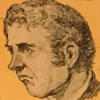
d: 1804
Wiley Harpe
Summary
Name:
Nickname:
Little Harpe/Wiley Roberts/John Setton/John Sutton/John TaylorYears Active:
1797 - 1804Status:
ExecutedClass:
Serial KillerVictims:
39+Method:
Shooting/Stabbing/Bludgeoning/DismembermentDeath:
February 08, 1804Nationality:
USA
d: 1804
Wiley Harpe
Summary: Serial Killer
Name:
Wiley HarpeNickname:
Little Harpe/Wiley Roberts/John Setton/John Sutton/John TaylorStatus:
ExecutedVictims:
39+Method:
Shooting/Stabbing/Bludgeoning/DismembermentNationality:
USADeath:
February 08, 1804Years Active:
1797 - 1804bio
Wiley Harpe, born William Harpe around 1770 in North Carolina, was of Scottish descent. During the American Revolutionary War, the Harpe family were Loyalists, leading to social ostracism. Wiley and his cousin (or possibly brother) Micajah "Big" Harpe turned to a life of crime, engaging in theft and violence. They later joined a group of Chickamauga Cherokee, adopting some of their customs and tactics. By the late 1790s, the Harpes had become notorious outlaws, feared across the American frontier.
murder story
Between 1797 and 1799, Wiley and Micajah Harpe embarked on a brutal killing spree across Tennessee, Kentucky, Illinois, and Mississippi. Their victims included men, women, and children, often murdered without clear motive. The Harpes were known for their extreme cruelty, sometimes disemboweling victims and filling their bodies with stones before disposing of them in rivers. Their crimes were so heinous that even fellow outlaws distanced themselves from the Harpes.
In August 1799, a posse led by Moses Stegall tracked down the Harpes in Kentucky. During the confrontation, Micajah was shot and captured. Before dying, he confessed to numerous murders. Stegall then decapitated Micajah, placing his head on a pole as a warning to others. The location became known as "Harpe's Head."
Wiley Harpe escaped capture and rejoined the Mason Gang pirates at Cave-In-Rock. Four years later, Wiley Harpe and fellow gang member Peter Alston attempted to claim a bounty by presenting the severed head of their former leader, Samuel Mason. However, they were recognized as outlaws themselves and arrested. Both men were tried and executed by hanging in February 1804. Their heads were cut off and placed on stakes along the Natchez Trace as a warning to other outlaws.